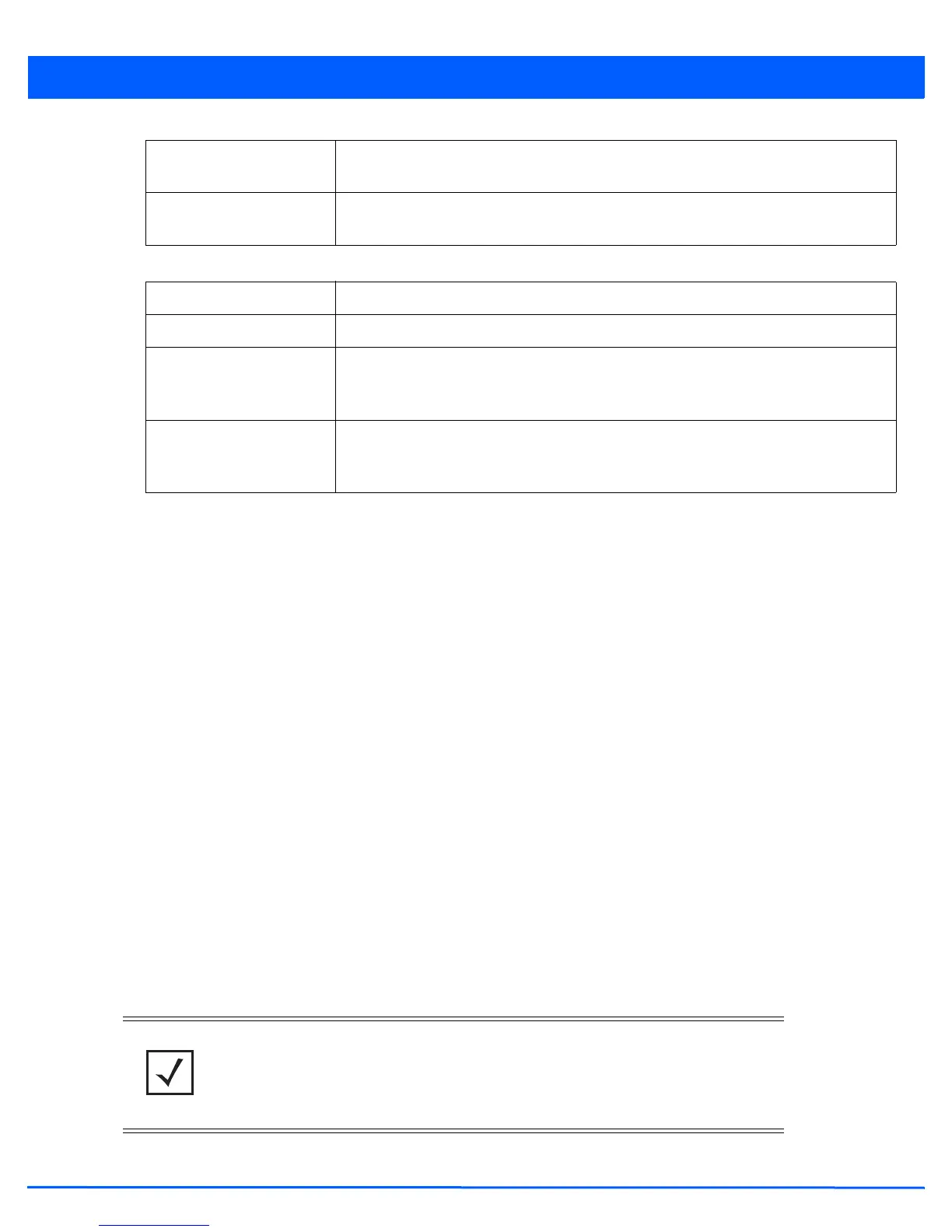Device Configuration 5 - 233
7. Define or override the following authentication parameters from within the Basic Settings field:
8. Use the NAT Direction field to specify the NAT direction used with the access point’s WAN card. Options include Inside,
Outside or None. The default is None.
9. Configure the Inbound IP Firewall Rules. Use the drop-down menu to select a firewall (set of IP access connection rules)
to apply to the PPPoE client connection. If a firewall rule does not exist suiting the data protection needs of the PPPoE client
connection, select the Create icon to define a new rule configuration or the Edit icon to modify an existing rule.
10. Select the VPN Crypto Map to use with this WWAN configuration. Use the drop-down menu to apply an existing crypt
map configuration to this WWAN interface.
11. Configure the WWAN Default Route Priority. Use the spinner control to set the Default Route Priority for the WWAN
default route. Select from 1 - 8,000. The default setting is 3,000.
12. Select OK to save or override the changes to the Advanced Settings screen. Select Reset to revert to the last saved
configuration.
5.4.5.3.6 PPPoE Configuration
Profile Interface Configuration
PPP over Ethernet (PPPoE) is a data-link protocol for dialup connections. PPPoE allows the access point to use a broadband
modem (DSL, cable modem, etc.) for access to high-speed data and broadband networks. Most DSL providers are currently
supporting (or deploying) the PPPoE protocol. PPPoE uses standard encryption, authentication, and compression methods as
specified by the PPPoE protocol. PPPoE enables WiNG supported controllers and access points to establish a point-to-point
connection to an ISP over existing Ethernet interface.
To provide this point-to-point connection, each PPPoE session learns the Ethernet address of a remote PPPoE client, and
establishes a session. PPPoE uses both a discover and session phase to identify a client and establish a point-to-point
connection. By using such a connection, a Wireless WAN failover is available to maintain seamless network access if the
access point’s Wired WAN were to fail.
Reset WAN Card If the WAN card becomes unresponsive or is experiencing other errors click the Reset
WAN Card button to power cycle and reboot the WAN card.
Enable WAN (3G) Select this option to enable 3G WAN card support on the device. A supported 3G card
must be connected to the device for this feature to work.
Username Provide your username for authentication support by your cellular data carrier.
Password Provide your password for authentication support by your cellular data carrier.
Access Point Name
(APN)
Enter the name of the cellular data provider if necessary. This setting is needed in areas
with multiple cellular data providers using the same protocols such as Europe, the middle
east and Asia.
Authentication Type Use the drop-down menu to specify authentication type used by your cellular data
provider. Supported authentication types are None, PAP, CHAP, MSCHAP, and MSCHAP-
v2.
NOTE: Access points with PPPoE enabled continue to support VPN, NAT, PBR and 3G
failover over the PPPoE interface. Multiple PPPoE sessions are supported using a single
user account user account if RADIUS is configured to allow simultaneous access.

